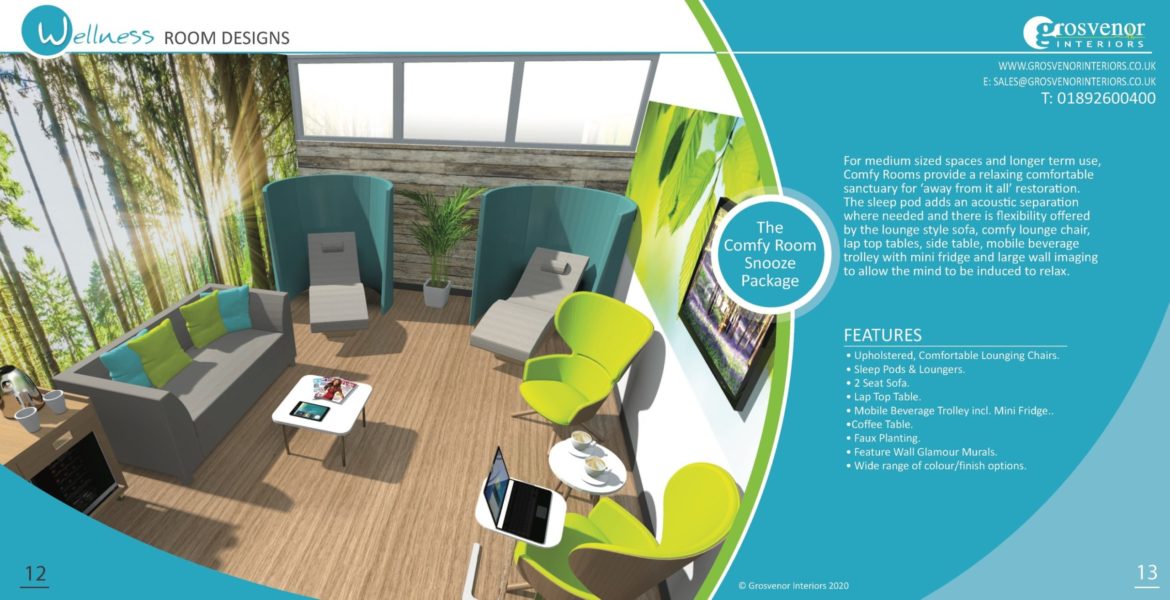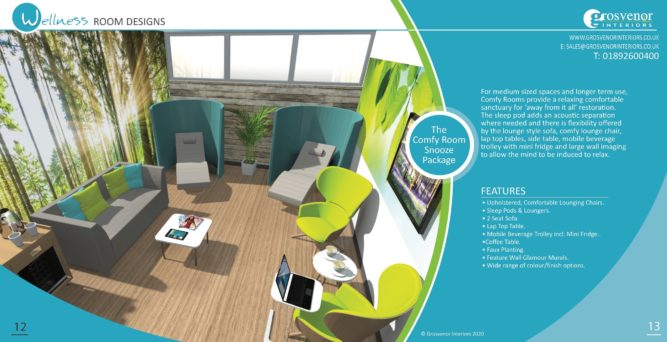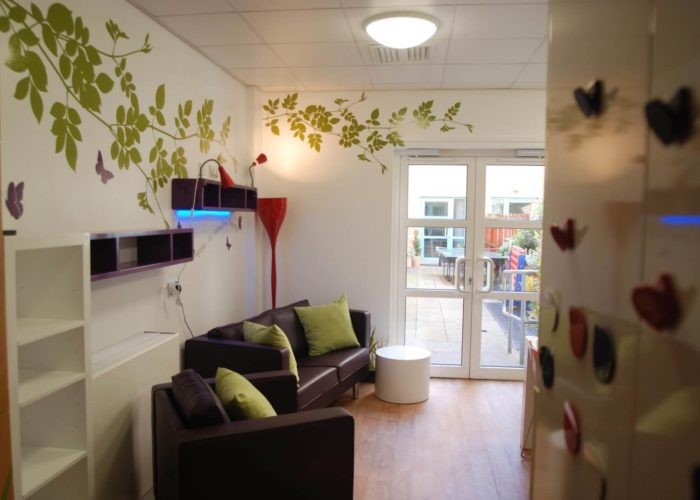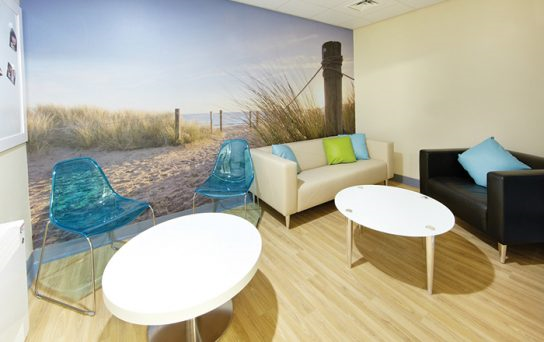
We’ve been working with hospitals, and closely with NHS staff, for over 10 years. Like the people they look after, we’ve always known how hard they work and are constantly in awe of how selflessly they keep doing their jobs day in, day out.
While patient experience is at the heart of what they do and normally the focus of our own work, we’re aware of how important it is to create a better working environment as well as a better place to get better.
As coronavirus has brought the amazing work they do to the forefront of the nation’s consciousness over the last few months, we’ve been thinking more about how we can create spaces that support the people who look after the patients. One of the ways we can do this is by creating wellness spaces.
What are wellness spaces?
Wellness spaces give healthcare workers the opportunity to restore, refresh and reflect away from their ward and patients. They are tranquil environments that allow nurses, healthcare assistants and other ward staff to seek comfort, both mentally and physically. They are a place for staff to take a power nap to recharge their batteries or to simply steal five minutes to put their feet up.
More than anything else, it should be the place where they can find some much-needed privacy to close their eyes and take a deep breath before continuing on with their day.
Why are wellness spaces so important?
Wellness spaces give staff a dedicated place to recharge away from the main ward, making it easier to switch off mentally, as well as physically, while they’re on their break. By removing themselves completely from their working environment, staff benefit from a better quality of rest, supporting their wellbeing not only in the short term, but in the long term, too.
And there are other benefits as well. By creating an environment that is solely for staff, a wellness space also becomes a conversation space. This social interaction, however great or small, often naturally evolves into a support network of people being created around each person. These networks allow experiences to be shared, collective solutions to common problems to be found and staff to feel buoyed by their peers.
The calm of a wellness space also makes it an ideal environment, for those staff who find it helpful, to practice mindfulness and meditation. The mental health benefits of both practices are well documented; they can help prevent overwhelm, reduce stress levels and even improve low mood.
How Do We Create Wellness Spaces?
We combine carefully selected Wall Art, considered colour schemes and bespoke furniture to create spaces that promote wellbeing, allowing staff to relax however they need to.
Wall Art is one of our most popular products and we’ve used it in hospitals up and down the country. As well as brightening up beige walls, it brings rooms together and lifts their atmosphere. In spaces designed to promote wellbeing, we often use images that depict outdoor spaces to alleviate feelings of claustrophobia and enhance the sense of tranquillity that staff experience within the room.
The Wall Art we select for each space is complemented by a colour scheme that is carefully chosen by our design team. Taking colour psychology into consideration, bright, vivid colours are set aside in favour of a calmer, more reassuring palette comprised of natural greens and blues.
We complete each space with bespoke furniture, designed to accommodate the needs of those who are using the space. Our sleep pods and recliners provide a dedicated place for staff to take a power nap, while sofa pods and comfortable lounge chairs give them the opportunity to relax and catch up with colleagues. We further enhance the space with floor lamps and faux planting to create a restorative atmosphere within the room that feels as far away from clinical as possible.

Turning the Focus from Clinical to Comfort
We’ve been creating hospital environments focused on non-clinical wellbeing for a number of years already.
 We’ve worked with Teenage Cancer Trust to create social spaces that feel a million miles away from the clinical environment usually found on wards. While these have focused on the needs of patients, we know that similar spaces for staff could be of great benefit, too.
We’ve worked with Teenage Cancer Trust to create social spaces that feel a million miles away from the clinical environment usually found on wards. While these have focused on the needs of patients, we know that similar spaces for staff could be of great benefit, too.
Social spaces are places for young patients to build a support network of peers on a similar journey, while wellness rooms for staff can become places where a support network of peers can flourish.
As well as creating social spaces for patients, we’re often called upon to create dedicated quiet rooms away from main wards. These spaces are often the place where clinical teams deliver results, both good and bad, but also act as a sanctuary from the unrelenting business of a busy hospital.
These rooms allow patients and their families the time and space to process their journey so far and come to terms with where they are presently. A dedicated space for staff to rest and reflect can help to alleviate stress in a similar way and relive feelings of overwhelm and anxiety.
 Patients are often the people we think about when we begin to consider the benefits of a better hospital environment. But while our focus is centred on their wellbeing, it’s easy to overlook the benefits that a better hospital environment could afford the staff who help them on their health journey.
Patients are often the people we think about when we begin to consider the benefits of a better hospital environment. But while our focus is centred on their wellbeing, it’s easy to overlook the benefits that a better hospital environment could afford the staff who help them on their health journey.
We’d love to tell you more about how we can create better environments for the healthcare workers who dedicate their time to looking after others. If you want to find out more about how we can create a better environment for them in your hospital, get in touch
